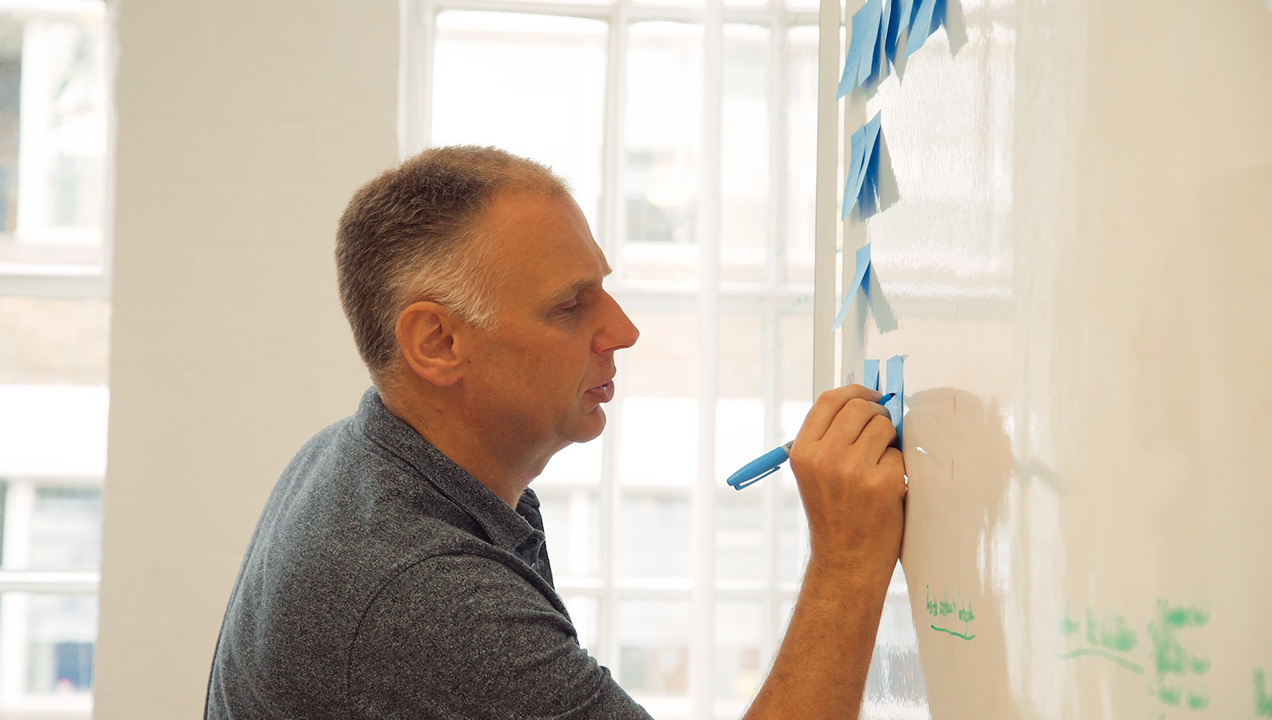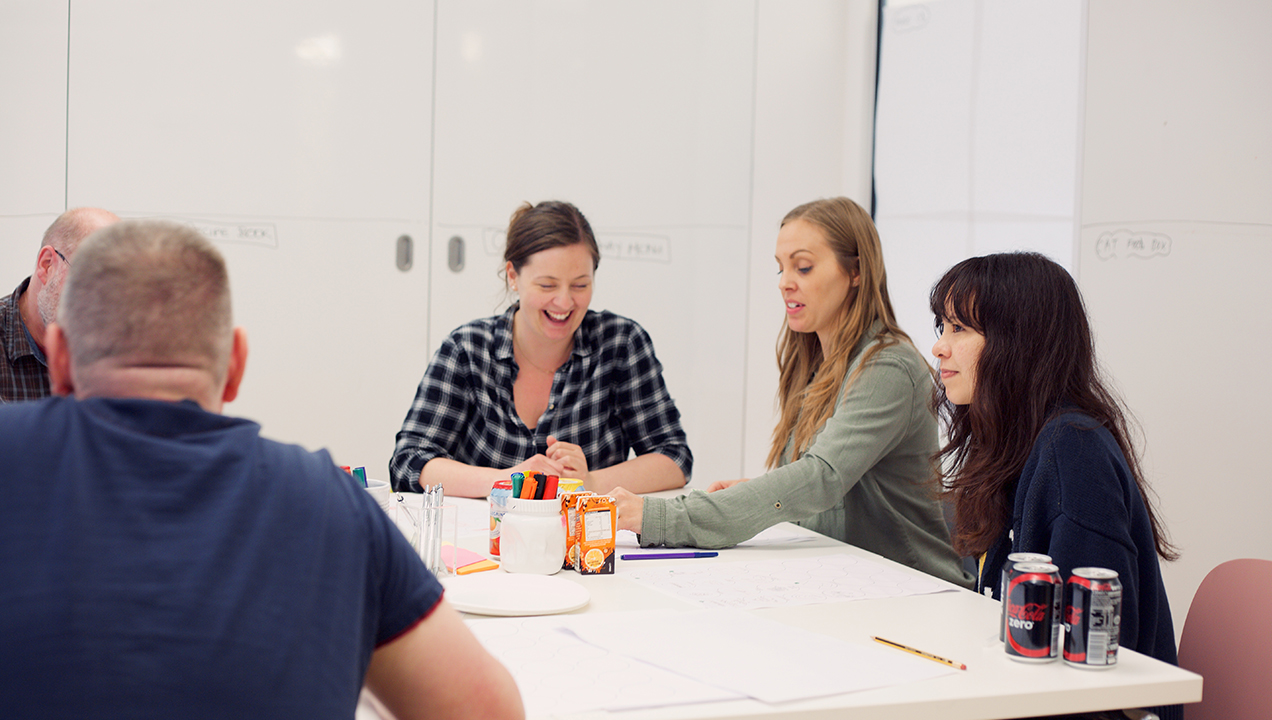Global Lessons to Improve UX Maturity
The idea of improving user experience appears so simple that every company in the world, large or small seems to be taking a stab at it. The big difference between a few half-hearted board meetings, a website redesign or a new call centre script and real consistent UX improvement is what we refer to as UX Maturity; how fully developed an organization’s approach to their user experiences are, and how well those experiences translate to every user.

We spend a lot of our time working with organizations to improve their UX Maturity, putting a stake in the ground to assess where they are now, and helping them to design a roadmap to keep improving as they move forward. It is a constant subject of discussion among our friends and peers in the UX Alliance too, so we have gathered together the best advice from our partners around the world for improving an organization’s UX Maturity.
Design is a Management Concern
Finding an advocate for improving user experiences within an organization is all well and good, but if they have no power to make changes, it doesn’t matter how well they have thought everything through. This is why companies that prioritize UX often employ a Chief Experience Officer who reports directly to the Chief Executive Officer. When working with an organization with no experience or understanding of Experience Design, it is vital to find someone in a position of authority who will champion the UX cause. UX Maturity can be like a virus, once one person in the organization understands the value of improving UX, it will spread out exponentially to all employees. Inviting someone in upper management to get hands-on in research and design activities is usually enough to infect them. Once that culture shift has begun, employees from the highest to the lowest levels of an organization will begin to look at improving user experiences as a part of their role. The more involved that everyone across the company is, the more thorough the improvements will be.

Show Return on Investment
For organizations that are built on hard facts and numbers, qualitative data can be difficult to understand. Attaching a monetary value to an improved UX is probably the easiest way to win those organizations over to a UX focused way of thinking. It’s not always straightforward, as discussed in a previous ROI post, but if you can show that a better user experience leads to better user retention, better sales or improved figures on any of the spreadsheets they use to judge success then they are going to be more content.
In the early stages of introducing UX Design it can be worthwhile to devise some “quick wins,” addressing specific points that users are having trouble with, to prove immediately that UX Maturity works and that improving UX will pay off over time.
In the early stages of introducing UX Design it can be worthwhile to devise some “quick wins,” addressing specific points that users are having trouble with, to prove immediately that UX Maturity works and that improving UX will pay off over time.

The Big Picture
Rather than treating UX as a toolbox to resolve specific issues that users have to deal with, it is more helpful to adopt a human centric approach as a guiding principle. If understanding human behavior, user journeys and pain points are understood from the start of the design process, UX problems should never have the opportunity to develop. It is very easy to see UX as a troubleshooting tool but bringing in a UX specialist to resolve a few specific points that are causing user discomfort is a short-term patch to a long-term problem. The other thing that is often forgotten in UX design is that customers of your organization are not its only users. Employee experiences will also have a major impact. Optimizing internal processes for ease of use can reduce errors, lower costs, and improve employee satisfaction, which always translates to better productivity. For customer-facing staff, better tools will also mean that they can provide better service, which is good for everyone.
It is very easy to see UX as a troubleshooting tool but bringing in a UX specialist to resolve a few specific points that are causing user discomfort is a short-term patch to a long-term problem.
Knowing When to Ask For Help
While the situation is improving, there are still too few organizations with their own dedicated UX research and design teams. Often,organizations will have brief bursts of data-collection in the form of focus groups that are never realized into systemic changes. This can result in improvement to individual features without context while leaving the overall experience still flawed. On the other side of the coin, some organizations hire in designers with a focus on usability who fail to conduct any research, working instead to standards of “best practices” which don’t relate to that organizations’ users’ specific needs. UX Maturity is still a relatively new concept which few organizations are equipped to deal with themselves. If an organization doesn’t know where to start, then hiring a UX expert to perform a maturity assessment and to coach them on UX is the simplest solution. There is no shame in asking for help.
Special thanks for these helpful hints and tips go to:
Shailesh Manga at GFK, New Zealand
Bob Schumacher at GFK, Chicago
Anne-Marie Lassage at YuCentrik, Canada
Stefano Zanini at Assist Digital, Italy
Natalia Vivas at Usaria, Colombia
Ilana Kaplan at Bayfront UX, Australia
Jean-Phillipe Boudarie at Axance, France
Ruben Leal at Usaria, Mexico
Szeran Milo at Symetria, Poland
Maffee Wan at GFK, China
Helga Stegmann at Mantaray UX, South Africa
Jorge Barahona at Ayerviernes, Chile
Andrew Swartz at Sutherland Labs, UK
Learn from our global parters!
Developed by the UX Alliance, the UXPM which is part of an internationally accredited programme, is a training course designed for those who want to understand the fundamentals of UX, adopt UX methodologies in projects and encourage a customer-centered design culture in their organizations.
